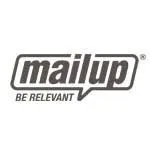Choosing the right email marketing tool is like picking the perfect assistant for your digital marketing strategy. It’s a decision that can elevate your brand’s communication, streamline your workflow, and ultimately, boost your sales. In this comprehensive guide, we’ll dive deep into two of the most popular platforms in the email marketing arena: SendPulse and MailUp. We’re not just comparing features; we’re exploring how each tool can uniquely fit into your business strategy. Whether you’re a small business owner, a digital marketer, or someone curious about email marketing tools, this guide promises to be your roadmap in making an informed choice.
| SendPulse | MailUp |
|---|---|
 |  |
| G2 Score – 4.6 out of 5 stars | G2 Score – 3.7 out of 5 stars |
| TrustRadius Score -7.9 out of 10 | TrustRadius Score – 6.0 out of 10 |
Ease of Use: Navigating the User Experience
When it comes to email marketing tools, the ease of use can be a game-changer. After all, what good is a tool if it’s too complex to navigate? Let’s start by comparing SendPulse and MailUp from a user experience standpoint.
SendPulse: Simplicity Meets Functionality
SendPulse greets you with a user-friendly interface that’s clean and intuitive. For beginners, this is a blessing. You don’t have to be a tech wizard to find your way around. The dashboard is well-organized, with clear labels and a logical layout. What’s more, SendPulse offers a drag-and-drop email editor, making it a breeze to design emails. Even if you’re not a designer, you can create professional-looking emails in minutes.
MailUp: Professional and Detailed
MailUp takes a slightly different approach. Its interface is more detailed, catering to users who love having numerous features at their fingertips. While it might seem a bit overwhelming at first, especially for newbies, it’s a goldmine for seasoned marketers who crave detailed customization. The email editor is robust, offering advanced options for those who want to dive deep into email design.
Setting Up Campaigns: The Real Test of User-Friendliness
Creating an email campaign in SendPulse is a walk in the park. With step-by-step guidance, you can set up a campaign in no time. The platform offers pre-designed templates, which you can customize to your liking. This means less time fiddling with settings and more time focusing on your content. MailUp shines when it comes to customization options for setting up campaigns. It offers a range of advanced features like dynamic content, A/B testing, and detailed segmentation. This is ideal for marketers who want to tailor every aspect of their campaign for maximum impact. However, this level of detail means you’ll spend more time setting up each campaign.
Learning Curve: Getting to Mastery
Thanks to its straightforward design, mastering SendPulse doesn’t take long. The platform also offers a wealth of tutorials and support resources, making the learning process smoother. MailUp, with its advanced features, has a steeper learning curve. But for those willing to invest the time, the payoff is a highly customized and targeted email marketing strategy.
In the end, the choice between SendPulse and MailUp in terms of user experience depends on your needs and expertise level. If you’re starting out or prefer simplicity and speed, SendPulse is your go-to. For those who relish in detailed customization and have the time to learn, MailUp could be the better choice.
Feature Set: Diving into Capabilities
The true power of an email marketing tool lies in its features. It’s not just about sending emails; it’s about creating a journey for your subscribers. In this section, we’ll peel back the layers of SendPulse and MailUp to understand what makes each tick in terms of features.
SendPulse: Multifaceted yet Manageable
SendPulse doesn’t just offer email campaigns; it offers a multi-channel marketing platform. This means you can integrate your email marketing with SMS and web push notifications. It’s a holistic approach, ensuring your message reaches your audience, no matter where they are. The standout feature? The AI functionality. It predicts the best time to send emails to each subscriber, boosting open rates significantly.
MailUp: Precision and Professionalism
MailUp takes email campaigns to a professional level. It offers everything from transactional emails to complex automation workflows. The platform allows for intricate segmentation and personalization, ensuring your message resonates with each segment of your audience. It’s not just about sending emails; it’s about sending the right message, to the right person, at the right time.
Automation: Set It and Forget It
SendPulse’s automation tools are user-friendly yet powerful. You can set up automated sequences based on user actions or particular events. It’s like having a conversation with your subscribers, guided by their preferences and behaviors. MailUp’s automation capabilities are where it really shines. It offers a visual journey builder, allowing you to craft complex, multi-step journeys with ease. The level of detail in targeting and segmentation is unmatched, making it possible to automate highly personalized and relevant communication.
Analytics: Measuring Success
SendPulse offers comprehensive analytics, allowing you to track open rates, click rates, and more. The data is presented in an easy-to-understand format, making it simple to measure the success of your campaigns and make data-driven decisions. MailUp goes a step further in analytics. It not only offers detailed metrics but also integrates with Google Analytics for an in-depth understanding of how your email campaigns influence your overall marketing strategy. It’s a treasure trove for data lovers who want to analyze every aspect of their campaigns.
Integration: Playing Well with Others
SendPulse offers numerous integrations with popular services and CRMs. This ensures that your email marketing efforts are in sync with your overall business operations, providing a seamless experience for both you and your subscribers. MailUp’s strength lies in its powerful API and numerous integrations. It allows for a high level of customization and ensures that MailUp can fit perfectly into your existing tech stack, enhancing your marketing efforts without disrupting your existing workflows.
Both SendPulse and MailUp offer robust feature sets designed to meet various needs. SendPulse is the jack of all trades, offering a comprehensive, user-friendly platform with the added power of AI. MailUp is the master of detail, with advanced features that cater to the professional marketer who wants to delve deep into personalization and analytics.
Pricing: Understanding the Cost of Quality
When it comes to selecting an email marketing tool, pricing is a crucial factor. It’s not just about the numbers; it’s about what you get for your investment. In this section, we’ll compare the pricing structures of SendPulse and MailUp, unraveling the details to help you understand which platform offers the best value for your specific needs.
| SendPulse | Free Plan: Allows up to 2,500 subscribers and 15,000 emails per month. Standard Plan: Starts around $6.40/month for up to 500 subscribers, with unlimited emails, and scales up with more subscribers. Pro Plan: For larger businesses, with advanced features. Pricing starts at higher rates and varies based on the number of subscribers. |
| MailUp | Pay Per Speed Plans: MailUp’s pricing is based on sending speed rather than the number of contacts. Starts at around $65/month for the slowest sending speed. Monthly Plans: Also offers traditional monthly plans based on the number of emails sent, with prices starting at around $85/month for up to 400,000 sends. Prepaid Credits: Alternatively, you can buy prepaid credits for sending emails without a monthly fee. All plans include features like email automation, transactional emails, and analytics. |
SendPulse: Flexibility to Fit Your Budget
SendPulse operates on a tiered pricing model, which means you pay based on the number of subscribers you have. This is great for businesses of all sizes, as you can start small and scale up as your subscriber list grows. The basic plan is quite generous and includes access to most features, making it an attractive option for those just starting out or operating on a tight budget.
One of the highlights of SendPulse is its free tier. It allows a significant number of emails per month to a limited number of subscribers, which is perfect for small businesses or startups testing the email marketing waters. It’s not just a teaser; it’s a fully functional plan that lets you explore a good portion of SendPulse’s capabilities without spending a penny.
SendPulse scores high on transparency. There are no hidden fees; what you see is what you get. However, as your needs grow, you might find yourself paying for additional features or a higher tier to accommodate a larger subscriber list.
MailUp: Paying for Precision and Professionalism
MailUp also follows a tiered pricing model, but with a focus on the volume of emails rather than the number of subscribers. This can be advantageous if you send frequent emails to a relatively stable subscriber base. The plans are designed to cater to businesses serious about their email marketing campaigns, offering advanced features even at the lower tiers.
Unlike SendPulse, MailUp doesn’t offer a permanent free tier. However, it does provide a free trial, allowing you to test the waters before making a commitment. This trial period is a great way to explore MailUp’s extensive features and see if it aligns with your business needs.
MailUp’s pricing reflects its advanced feature set and is geared towards businesses ready to invest in a high-level email marketing strategy. While it might be a higher upfront cost compared to SendPulse, the breadth of features and depth of customization can lead to a higher ROI for businesses that leverage its full potential.
Choosing between SendPulse and MailUp based on pricing comes down to your business size, needs, and how you engage with your audience. SendPulse is ideal for those seeking flexibility and a low entry cost, especially with its robust free tier. MailUp, on the other hand, is a powerhouse for the professional marketer who sees email marketing as a central strategy and is prepared to invest in it.

Related: Check out our free SEO suite

Customer Support: Ensuring You’re Never Stuck
In the world of email marketing, having a reliable support system can make a world of difference. Whether you’re facing a technical glitch or need guidance on best practices, timely and helpful support can save the day. Let’s delve into how SendPulse and MailUp stack up in terms of customer support.
SendPulse: Friendly and Accessible Support
SendPulse prides itself on its customer support. With 24/7 support through various channels including live chat, email, and phone, help is always just a click or call away. Users often praise the responsiveness and helpfulness of the support team, highlighting the human touch that makes problem-solving smoother.
In addition to direct support, SendPulse offers an extensive knowledge base. This includes tutorials, articles, and video guides covering a wide range of topics. It’s designed to empower users to find answers quickly and learn new skills at their own pace. SendPulse nurtures a community of users where you can share experiences, ask questions, and get insights from fellow marketers. This peer-to-peer support system can be incredibly valuable, offering real-world advice and networking opportunities.
MailUp: Professional and Comprehensive Support
MailUp’s approach to customer support is meticulous and professional. The platform offers dedicated support through various channels, including a ticketing system that ensures your queries are tracked and resolved systematically. The support team is known for its technical expertise, making it a reliable resource for more complex issues. MailUp provides a rich library of resources, including detailed guides, best practice manuals, and case studies. These resources are not just about troubleshooting but also about educating users on maximizing their email marketing strategy.
For businesses looking to deeply understand MailUp’s capabilities, the platform offers training sessions and webinars. These sessions are not just about using the platform; they’re about mastering email marketing as a discipline, offering insights that can transform your marketing strategy.
Both SendPulse and MailUp offer strong customer support, but they cater to different types of users. SendPulse is ideal for those who value quick, friendly, and accessible support to help them through any hiccups. MailUp, on the other hand, is perfect for those who seek not just support but also deep, educational resources and training to elevate their email marketing game.
Deliverability: Ensuring Your Messages Reach the Inbox
One of the most crucial aspects of email marketing is deliverability – the ability of your emails to successfully land in your recipients’ inboxes, not their spam folders. High deliverability rates are essential for effective campaigns, so let’s compare how SendPulse and MailUp perform in this critical area.
SendPulse: Focused on Your Email’s Journey
SendPulse invests heavily in its sending infrastructure to ensure high deliverability. The platform maintains good relationships with ISPs (Internet Service Providers) and follows best practices for email sending, which significantly reduces the chances of your emails ending up in spam. Before you even send your email, SendPulse provides tools to test and optimize your emails for deliverability. This includes checking your content for spam triggers and ensuring your email design is compatible with various email clients. With SendPulse’s real-time analytics, you can monitor your email performance closely. This means you can quickly identify and rectify issues that could be affecting your deliverability, such as bounces or spam complaints.
MailUp: Precision in Every Send
MailUp offers advanced deliverability features designed for high-volume senders. This includes sophisticated IP management, domain authentication tools, and a deliverability suite that gives you deep insights into your email performance. MailUp doesn’t just send your emails; it monitors them proactively. The platform provides detailed reports on delivery rates, bounces, and spam complaints. It also alerts you about potential deliverability issues, helping you maintain a pristine sending reputation. What sets MailUp apart is its expert deliverability support. If you encounter issues, you have access to specialists who understand the nuances of email deliverability. They can provide tailored advice and interventions to ensure your emails consistently reach the inbox.
Both SendPulse and MailUp offer robust deliverability features, but their approaches cater to different needs. SendPulse focuses on ease of use, offering user-friendly tools and real-time analytics to help maintain good deliverability. MailUp, with its advanced features and expert support, is ideal for high-volume senders who need precision and control over their email deliverability.
Integration Capabilities: Enhancing Your Marketing Ecosystem
In today’s digital age, an email marketing tool’s ability to integrate seamlessly with other applications and services can significantly amplify its effectiveness. A well-integrated platform can streamline your workflows, enhance your data insights, and provide a more cohesive user experience. Let’s explore how SendPulse and MailUp fare when it comes to integration capabilities.
SendPulse: Simplifying Integration
SendPulse understands the importance of being part of a larger ecosystem. It offers a wide array of integrations with popular CRMs, e-commerce platforms, and various other tools. Whether you’re using WordPress for your website, Shopify for your online store, or Salesforce for your customer relationship management, SendPulse is designed to connect effortlessly.
For those who have custom needs or require deeper integration, SendPulse provides a robust API. This allows developers to create custom integrations, ensuring that SendPulse can adapt and fit perfectly into your unique tech stack. SendPulse is integrated with Zapier, opening the door to countless integration possibilities. With Zapier acting as a bridge, you can connect SendPulse with over a thousand other apps, automating workflows and streamlining your processes without the need for complex coding.
MailUp: Integration at a Professional Level
MailUp’s integrations are particularly strong in the realms of e-commerce and advanced marketing tools. The platform offers native integrations with leading e-commerce platforms, enabling you to create highly targeted and personalized email campaigns based on customer behavior and purchase history. Like SendPulse, MailUp offers a powerful API, catering to businesses that need custom integrations. The API is comprehensive and well-documented, making it easier for developers to connect MailUp with your existing systems, be it for syncing subscriber lists, automating email campaigns, or generating detailed reports.
MailUp places a strong emphasis on analytics and reporting. It offers advanced integrations with analytics tools, allowing you to track the performance of your email campaigns in the context of your broader marketing strategy. This means you can measure the impact of your emails on your overall business goals, making data-driven decisions more straightforward.
Both SendPulse and MailUp offer robust integration capabilities, but they cater to different types of users and needs. SendPulse is the go-to option for businesses that want a straightforward, user-friendly solution with a broad range of integrations and the flexibility of Zapier connectivity. MailUp, on the other hand, is ideal for businesses that require deeper, more sophisticated integrations, particularly in the realms of e-commerce and analytics.
Conclusion
In the dynamic world of email marketing, choosing between SendPulse and MailUp hinges on your unique business needs and preferences. SendPulse shines with its user-friendly interface, diverse multi-channel capabilities, and a wide array of integrations, making it an ideal choice for those seeking simplicity and versatility. On the other hand, MailUp caters to the more detail-oriented marketers with its robust feature set, advanced customization options, and professional-grade analytics and deliverability. Both platforms offer strong customer support and integration capabilities, ensuring that regardless of your choice, you have a powerful tool to enhance your marketing strategy. Ultimately, whether you value straightforward functionality and ease of use or seek depth, precision, and professional tools, both SendPulse and MailUp stand out as formidable options in the realm of email marketing tools.
Read Next:
- ActiveCampaign vs SendX: The Best Email Marketing Tool for 2024
- ActiveCampaign vs Mad Mimi: The Best Email Marketing Tool for 2024
- ActiveCampaign vs SendPulse: The Best Email Marketing Tool for 2024
- ActiveCampaign vs Aritic Mail: The Best Email Marketing Tool for 2024
- ActiveCampaign vs Emma: The Best Email Marketing Tool for 2024






















Comments are closed.